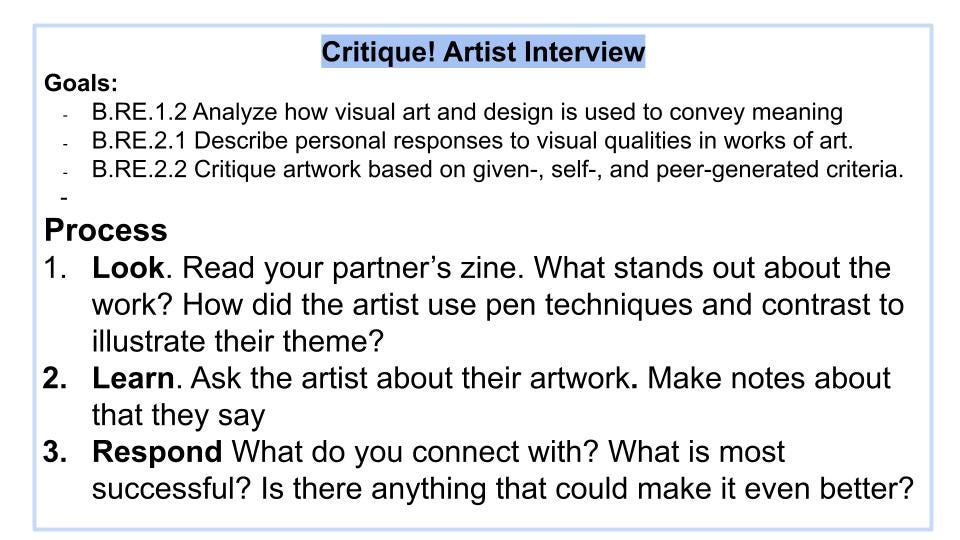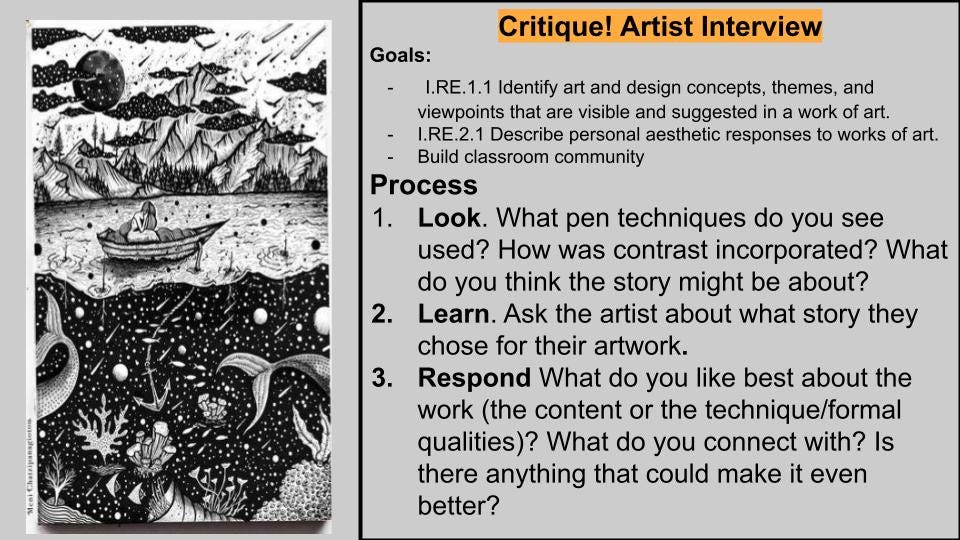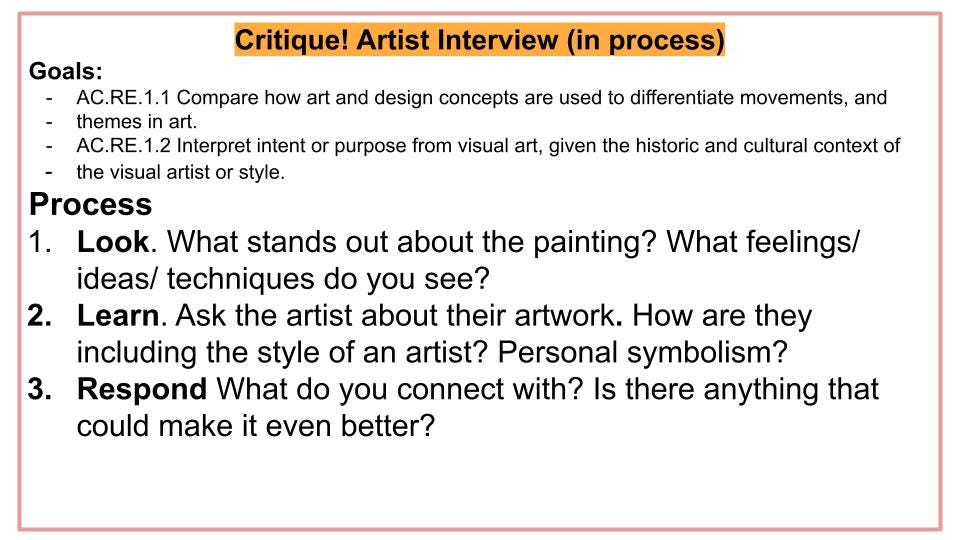Building Classroom Community with Critique
A new(ish) way to look at art
I tried a new critique format I’ve been working on with all three of my classes this week. I like it because it supports seeing, learning about, and responding to peer work, as well as developing opinions and giving feedback.
I have a wonderful student teacher this semester. Recently, she taught a lesson on art analysis, using the Feldman model (Describe, Analyze, Interpret, Decide) as the basis of student conversations. It was a good lesson and made me think about this model. The Feldman model has some strengths but leaves out what I see as one of the most important parts of critique - learning about and connecting to classmates. So I thought about what I would do differently.
I created the critique format I’m sharing here by combining the approach used in the AP Art History curriculum, a course I teach, with Visual Thinking Strategies, which I learned about by participating in a fellowship through the amazing North Carolina Museum of Art.
AP Art History centers on understanding artworks through form, function, content, and context. Read more about it here, specifically objective 1.1 and the glossary at the end. I love how this approach includes learning about the artist’s intent and the context surrounding the work. I feel like this is essential to understanding a work of art. This model does not include personal interpretation.
Visual Thinking Strategies, or VTS, which was developed based on cognitive psychologist Abigail Housen’s Theory of Aesthetic Development. It focuses on looking at art with three open-ended questions:
What's going on in this picture?
What do you see that makes you say that?
What more can we find?
I love how VTS centers personal response to artwork through open-ended questions. I miss the inclusion of the artist’s intent or the context of the work.
I want both context and personal response for my students, along with connection. Here is the format I developed with that in mind. I’ve used it in the form of an artist interview between peers who take turns studying and talking about each other's work. It’s here on Canva as well.
I used this format with my Beginning, Intermediate, and Art 3 Honors classes this week. Below are the instructions I gave. I modified the “Look” and “Learn” part for each group based on what we were working on. Art 3 did an in-progress critique where I matched them up with a partner, the other groups critiqued finished work with the partner of their choice.
I like this format and will continue using it! What do you like about it? What would you add or change?
Thank you for reading






Sometimes the threads holding each of us in our world, cross and it is so weird! I am sitting here working through my ideas and PD notes, books... trying to meld together the formal analysis/Feldman's with a in-progress peer evaluation activity that focuses of artist's intent. I look up to see your email, what?!
I love your thoughts on this, it clicks in to my work in several places. I want to keep the Artist's Intent and some of the 4 step analysis vocabulary in my process, but I have some new ideas! Thank you!
Working on my NBCT and I am really struggling to get my kids interacting enough for the C3 videos, hoping I can get some peer discussion with something like this, as a step.